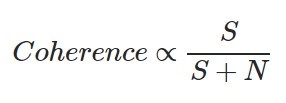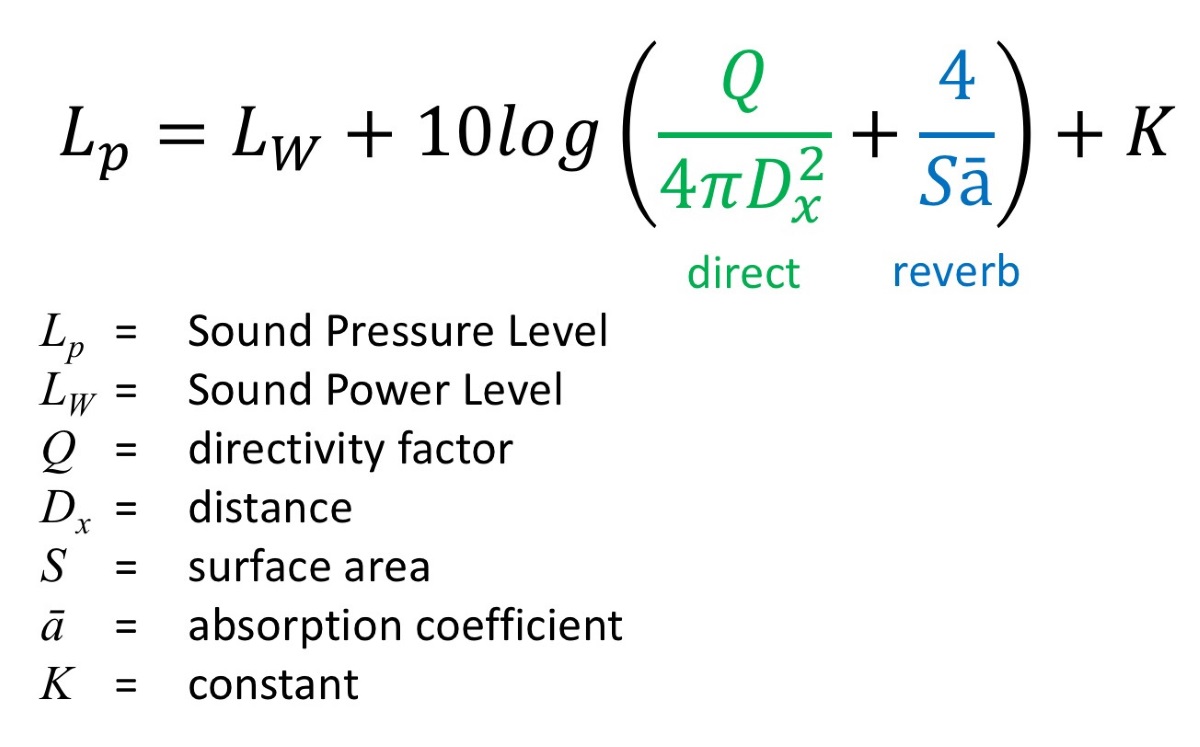
As long as the direct sound is dominating, there will be little or no ripple (6 dB or less) and high coherence because any reflections that could possibly cause destructive interference are soft by comparison.
We’re effectively isolated from the room and obtain near-anechoic data. Conversely, if the reverberant sound dominates, the reflections are so strong by comparison that they wreak havoc on the direct sound causing ripple in excess of 12 dB and low coherence.
My favorite tool, for the sole purpose of explaining the underlying mechanism involved, is the Hopkins-Stryker equation. With this equation we can estimate (at best) critical distance. The accuracy of this equation gets us into the “ballpark,” bringing us into the right order of magnitude; however, it should be treated with scrutiny.
In its simplest form, without the additional modifiers Ma and Me, here’s the equation:
Figure 7 provides a detailed explanation of all the variables. What makes this equation interesting is the part between parentheses. The first and second fraction determine how direct and reverberant levels evolve over distance respectively. Independent of the sound power level (SWL) or simply put, volume or loudness of the source.

Notice that only the first fraction contains a D² x in the denominator. That’s the 1/r² dependency or inverse-square law. Reverberation relies solely on the venue’s total surface area and the average absorption coefficient of that combined area. If we set Dx to dc, as in critical distance, and make direct and reverberation equally loud, the condition at critical distance, we obtain this equation:
If we solve this equation for dc, it leads to a new equation:
This indicates that in practice, critical distance depends primarily on Q and ā because surface area is a given unless you intend to bring a wrecking ball. We’ll take this further in my next installment, looking at issues such as directivity factor, the absorption coefficient and more.



